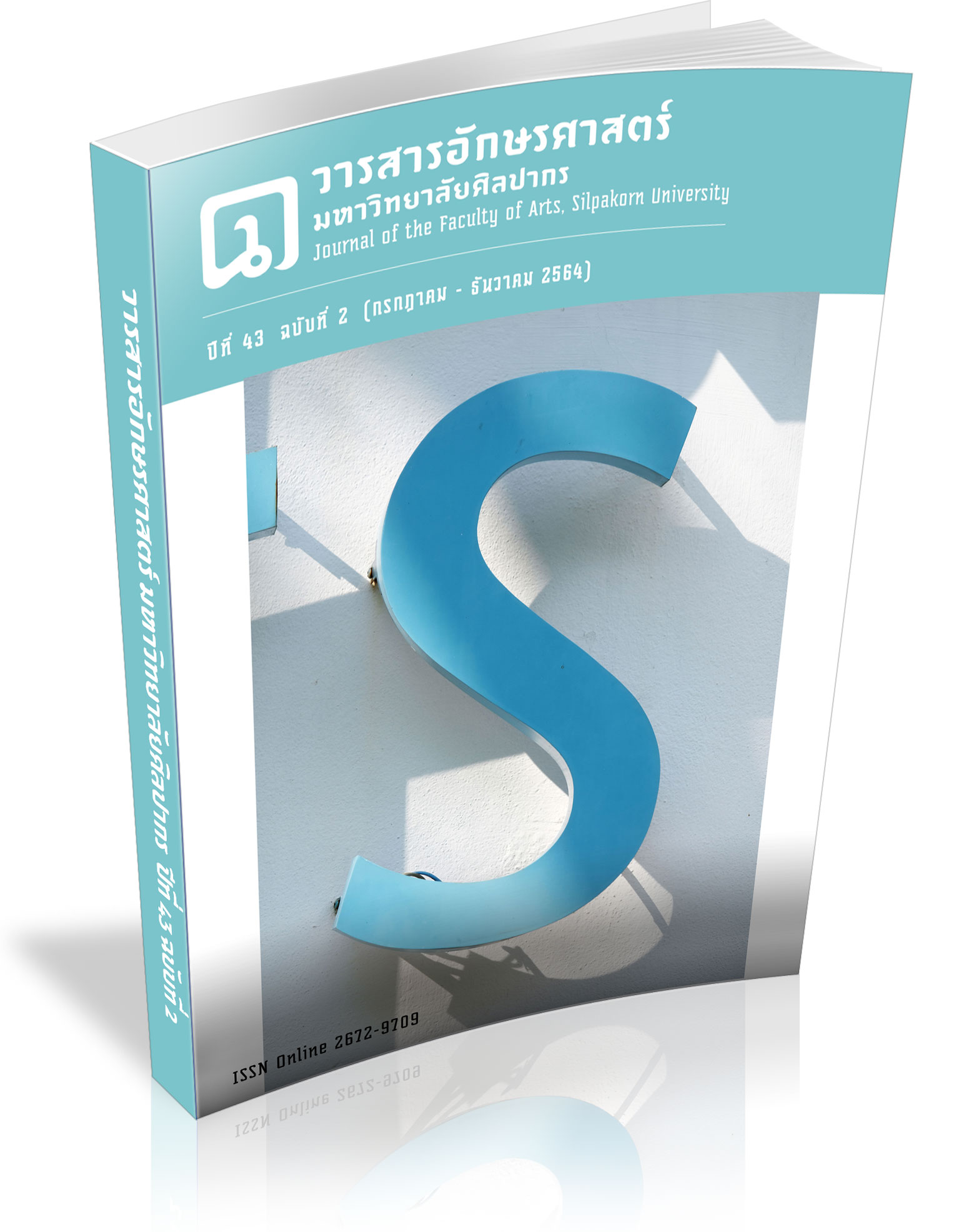Constructions with hâj in Thai from the Perspective of German
Keywords:
Construction, hâj (give), Thai, German, EquivalentsAbstract
This research is a Thai-German contrastive analysis focusing on answering two important research questions: 1) What forms, meanings, and functions of hâj constructions can be found and how can they be categorized? 2) What German forms and structures appear as equivalents of the hâj constructions in Thai and how can the relationship between them be explained? The data used for the analysis is a bidirectional parallel corpus consisting of short stories and non-literary articles written in Thai and German as well as their translations into the other language. The results of the analysis show that there are 14 forms of hâj constructions which can be categorized into 10 groups of meaning or semantic functions: verb function verb without meaning; transfer; benefactive or malefactive; causative; permissive; resultative; purposive; modal or manner; concessive; and temporal. There are 7 forms of the most important German equivalents of Thai hâj constructions: 1) the verb lassen; 2) the modal verb sollen; 3) the dative case; 4) the preposition zu; 5) the preposition für; 6) the conjunction um … zu; and 7) the infinitive particle zu. It is obvious that the grammaticalization process of hâj constructions in Thai and their German equivalents show some similarities in terms of meaning and structure.
Downloads
References
Chamniyom, R. (2003). A Study of preposition converted from verbs in Thai. Master Thesis, Silpakorn University, Thailand. (In Thai)
Dejthamrong, O. (1970). Grammatical functions of the word haj in Thai language. Master Thesis, Chulalongkorn University, Thailand. (In Thai)
Higbie, J. & Thinsan, S. (2002). Thai Reference Grammar. The Structure of Spoken Thai. Bangkok: Orchid Press.
Intratat, C. (1996). Grammaticalization of verbs into prepositions in Thai. Ph.D. Disseratation, Chulalongkorn University, Thailand. (In Thai)
Iwasaki, S. & Ingkaphirom, P. (2005). A Reference Grammar of Thai. Cambridge: Cambridge University Press.
Jenny, M. (2010). Benefactive strategies in Thai. In Zuniga, Fernando/Kittilä, Seppo (eds.): Benefactives and Malefactives. Typological perspectives and case studies. Amsterdam/Philadelphia, John Benjamin: 377-392.
Johansson, S. (2003). Contrastive linguistics and corpora. In: Corpusbased Approaches to Contrastive Linguistics and Translation Studies, edited by Sylviane Granger et al., pp. 31–44. Amsterdam, New York: Rapodi.
Martin, M. H. (2020). Die Übersetzung des Thailändischen Verbs /hăi/ ins Deutsche. Masterarbeit. Ramkhamhaeng University.
Newman, J. (1996). Give. A Cognitive Linguistic Study. Berlin/New York: Mouton de Gruyter.
Piyamahapong, P. (2016). Syntactic and semantic properties of benefactive markers phuea and hai in Thai. Disseration, Chulalongkorn University, Thailand. (In Thai)
Smyth, D. (2002). Thai. An Essential Grammar. London/New York: Routledge.
Takahashi, K. (2012). On historical semantic changes of the Thai morpheme hâj. Journal of the Southeast Asian Linguistics Society (JSEALS), 5, 126-141.
Downloads
Published
How to Cite
Issue
Section
License
Copyright (c) 2021 Journal of the Faculty of Arts, Silpakorn University

This work is licensed under a Creative Commons Attribution-NonCommercial-NoDerivatives 4.0 International License.
ผู้เขียนบทความต้องยินยอมในข้อกำหนดต่าง ๆ ของวารสารก่อนส่งบทความตีพิมพ์




